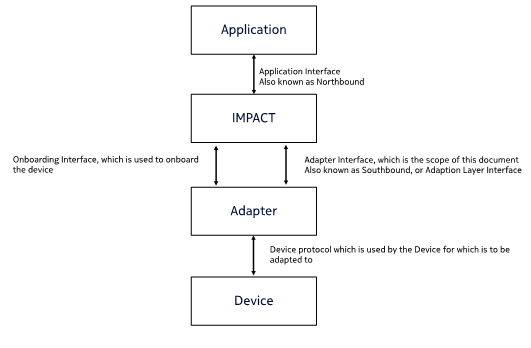Overview
This document is used when integrating with the Intelligent Management Platform for All Connected Things (IMPACT). IMPACT IoT includes a number of protocols, but often it is necessary to be able to add protocols and this can be done by customer, integrators or other personnel. IMPACT IoT provides the ability to support new device protocols with a set of APIs that can be used to adapt IMPACT IoT to the desired protocol. The interfaces use bidirectional HTTP with REST and JSON technologies. HTTPS can be used as an alternative to HTTP.
The software that uses this interface is call the “Adapter”. To ensure that there is no degradation in service, it is necessary to ensure external computing resources are made available for the Adapter. This also ensures the maximum choice in terms of deployment environment for the Adapter.
When developing the Adapter, consideration should be taken for non-functional capabilities that the end customer would expect. Examples include:
- Recovery from a complete power failure
- No single point of failure with redundancy
- Ability to change parameter settings without loss of service
IMPACT IoT provides a highly available interface and IMPACT IoT does not place any constraints on how these should be achieved within the Adapter itself.

Terms used in this document
-
The API is provided by the IMPACT IoT component called the Co-located intelligent gateway or CIG. For this document this will be simply termed as IMPACT IoT.
-
The terms Group and Tenant mean the same thing and are used synonymously.
-
The terms Serial Number, Device Id and End Point Client Name are also synonymous.
-
The term client application means any Northbound interface such as ADEP/IMPACT IoT/Client UI application.
-
The term Device means the Device which is communicating with the Adapter.